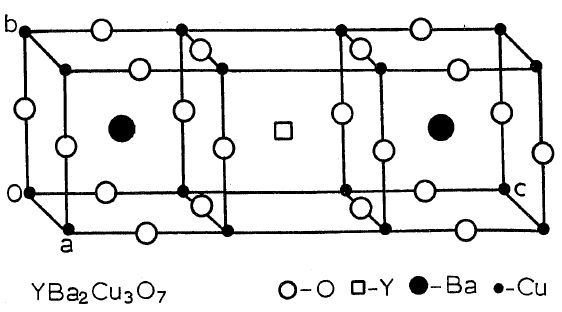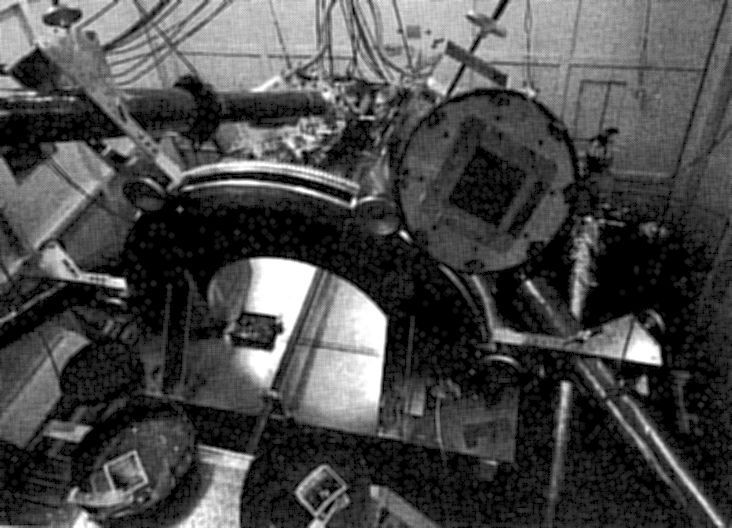


IUCr activities
Compton Scattering by High-Tc Superconductors
W. Schülke, the chairman of the IUCr Commission on Charge, Spin, and Momentum Density, invites interested crystallographers to participate in a new commission project entitled, "Fermiology of High-Tc Superconductors via High-Resolution Synchrotron-based Compton Scattering Spectroscopy."

Whether or not a Fermi surface (FS) exists in high-Tc superconductors is a question of fundamental importance. By combining the results of positron-annihilation two-dimensional angular correlation (2D-ACAR), angle-resolved photoemission (ARPES), and de Haas van Alphen (dHvA) experiments, the existence of a FS in essential accord with the conventional band theory predictions based on the local density approximation (LDA) has been established in at least the archetypal high-Tc superconductor YBa2Cu3O7. Each of the aforementioned spectroscopies however possesses its own strengths and limitations; UV photoemission is surface sensitive, while dHvA and - to a lesser extent - positron-annihilation is sensitive to crystal defects. Furthermore, in complex materials, signals associated with different pieces of the FS can be enhanced or suppressed in various spectroscopies as a result of matrix element and other effects; indeed, in the case of YBa2Cu3O7 the FS picture has been pieced together from ARPES which has yielded the large FS sheets associated with CuO2 planes, the 2D-ACAR which clearly shows the CuO chain related "ridge" sheets, and dHvA which gives orbits corresponding to the heavy-mass "pillbox" sheet, also arising from the CuO chains.
 X-ray spectrometer for Compton scattering measurements. The spectrometer has four sets of a Cauchois-type Si 422 bent-crystal analyzer and an imaging plate, which are arranged on the surface of a cone and share a scattering angle of 160°. Photo courtesy of N. Shiotani.
X-ray spectrometer for Compton scattering measurements. The spectrometer has four sets of a Cauchois-type Si 422 bent-crystal analyzer and an imaging plate, which are arranged on the surface of a cone and share a scattering angle of 160°. Photo courtesy of N. Shiotani.
Despite this progress, we still do not possess any direct experimental information concerning the size of the discontinuity in the momentum density associated with the FS in YBa2Cu3O7; the interpretation of the 2D-ACAR data in this regard is intrinsically complicated by the presence of electron-positron correlations. We emphasize that by the word Fermiology we mean not only the Fermi surface but also the spectral properties of the electron gas near the Fermi energy more generally. High-resolution Compton spectroscopy offers significant advantages, making it a potentially powerful tool, as a complement to other spectroscopies. Notably, Compton scattering is insensitive to defects or to the surface, would sample the electrons in the crystal more uniformly or at least differently than say positron-annihilation, and can in principle provide high momentum resolution; the best available resolution in Compton measurements (on the order of 0.8 mrad corresponding to 0.11 at. units) is already comparable to the 2D-ACAR results, and still somewhat better resolution should in principle be possible. Also, several strong synchrotron sources are at various stages of development, making the proposed effort to undertake such an application of the Compton technique particularly timely.
At a number of small meetings during 1992 A. Bansil, J. R. Schneider, W. Schülke, N. Shiotani, Th. Wolf, and L. Dobrzynski discussed procedures to develop the Compton technique as a probe of Fermiology of complex materials.
As a first step, the participants in the project should measure, with their own apparatus, one or more Compton profiles on samples possessing as nearly identical characteristics (i.e., shape and size, chemical and other physical properties) as possible (e.g., Si single crystals). The data should be analyzed via individual procedures which must be documented in detail. The goal is to develop standards for processing high-resolution Compton data with synchrotron radiation, much the same way as more than 15 years ago another Commission Project, the Water Project, led to standards for processing γ-Compton data. Many sources for systematic errors specific to the use of synchrotron radiation in obtaining Compton data can be anticipated. These include handling of background, modelling the reflectivity of analyzer crystals, inhomogeneous distribution of local efficiency of position sensitive photon detectors, beam position instabilities, and multiple scattering effects under conditions special to synchrotron radiation experiments.
In the second step, the group of participating scientists should collect Compton data and exchange experience in obtaining Fermi surface parameters and related information on rather simple well-known metallic systems. Here again, every participant should be free to choose specific systems, taking into account their own scientific interests and the potential of their experimental setup. These studies would establish procedures for extracting Fermiology from Compton data and give insight into questions concerning accuracy and propagation of errors in such analysis.
The next step will be Compton scattering experiments on more complex materials. YBa2Cu3O7 would be a good test candidate in that a great deal about the Fermiology of this material is already known, although this choice must be weighed against the possibility of obtaining large twin-free single crystals. It should be emphasized that future materials of wide interest, as seen from the example of the high-Tc's, are likely to involve complex structures, and the work on YBa2Cu3O7 will be crucially important in developing the proposed application of the Compton technique. Combined use of theoretical model building and reconstruction would help identify FS signatures in the Compton data and yield insight into the limits of validity of the conventional LDA approach in describing electron states in wide classes of materials. Intercomparisons of the Compton and 2D-ACAR data would be valuable in exploring the effects of electron-positron correlations. This project would be of interest to both theorists and the experimentalists.
Those interested in joining the project are requested to contact: Prof. Dr. A. Bansil, Dept. of Physics, Northeastern U., Boston, MA 02115, USA.
W. Schülke

